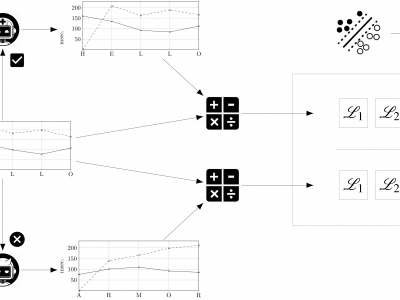Machine Learning

Passwords that were leaked or stolen from sites. The Rockyou Dataset is about 14 million passwords.
- Categories:
 1547 Views
1547 Views
Mother’s Significant Feature (MSF) Dataset has been designed to provide data to researchers working towards woman and child health betterment. MSF dataset records are collected from the Mumbai metropolitan region in Maharashtra, India. Women were interviewed just after childbirth between February 2018 to March 2021. MSF comprise of 450 records with a total of 130 attributes consisting of mother’s features, father’s features and health outcomes. A detailed dataset is created to understand the mother’s features spread across three phases of her reproductive age i.e.
- Categories:
 2384 Views
2384 ViewsDataset used in the article "The Reverse Problem of Keystroke Dynamics: Guessing Typed Text with Keystroke Timings". Source data contains CSV files with dataset results summaries, false positives lists, the evaluated sentences, and their keystroke timings. Results data contains training and evaluation ARFF files for each user and sentence with the calculated Manhattan and euclidean distance, R metric, and the directionality index for each challenge instance.
- Categories:
 668 Views
668 Views
Expanding our knowledge of small molecules beyond what is known in nature or designed in wet laboratories promises to significantly advance drug discovery, biotechnology, and material science. Computing novel small molecules with specific structural and functional properties is non-trivial, primarily due to the size, dimensionality, and multi-modality of the corresponding search space. Deep generative models that learn directly from data without the need for domain insight are recently providing a way forward.
- Categories:
 386 Views
386 Views
Twitter is one of the most popular social networks for sentiment analysis. This data set of tweets are related to the stock market. We collected 943,672 tweets between April 9 and July 16, 2020, using the S&P 500 tag (#SPX500), the references to the top 25 companies in the S&P 500 index, and the Bloomberg tag (#stocks). 1,300 out of the 943,672 tweets were manually annotated in positive, neutral, or negative classes. A second independent annotator reviewed the manually annotated tweets.
- Categories:
 11480 Views
11480 Views
# -*- coding: utf-8 -*-
"""
Created on Wed Feb 26 11:19:38 2020
@author: ali nouruzi
"""
import numpy as np
import random
- Categories:
 503 Views
503 ViewsThe S3 dataset contains the behaviour (sensors, statistics of applications, and voice) of 21 volunteers interacting with their smartphones for more than 60 days. The type of users is diverse, males and females in the age range from 18 until 70 have been considered in the dataset generation. The wide range of age is a key aspect, due to the impact of age in terms of smartphone usage. To generate the dataset the volunteers installed a prototype of the smartphone application in on their Android mobile phones.
- Categories:
 2514 Views
2514 Views



